The Genesis Gap

Tokyo Dinosaur Museum
The dinosaur skeleton in the foreground of the picture above is a Mamenchisaurus. There have been a number of skeletal remains of this dinosaur species found throughout China, the earliest being discovered in Sichuan Province in 1952 during construction of a highway. This massive earth roaming creature in its adulthood reached an astonishing 115 feet in length. The graphic below compares the various fossil remains of a number of different age Mamenchisaurus specimens that have been discovered, providing a comparison to the size of man.

Mamenchisaurus
Following is another image from within the Tokyo museum that demonstrates the scale of this massive creature.
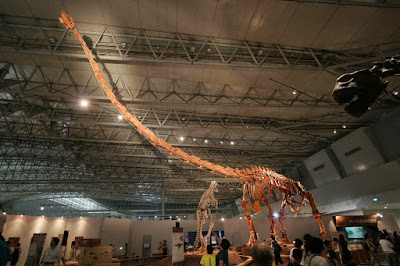
From America to Australia, from the Himalayan Mountains to the deserts of Arabia, even in the frozen wasteland of Antarctica, fossils of extinct species of animals have been found that dwarf any animals that exist today. The giraffe and elephant are tiny in comparison. An African Bush Elephant averages 4.9 tons in weight, with the maximum weight being 10 tons. The giraffe may reach a weight of 2 tons. The size and mass of the elephant and giraffe is impressive when compared to man, but they seem relatively puny when compared to many of the larger dinosaurs. The fossil remains of the Argentinosaurus have led to an estimate of the creature’s weight at 73 tons, more than seven times the mass of the largest elephant.
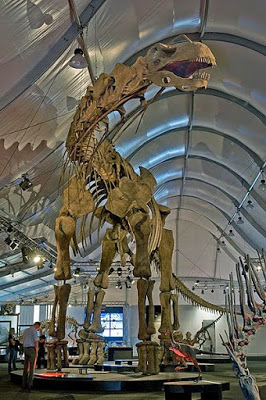
Reconstructed Argentinosaurus
The Pterosaurs, or flying lizards, also were of remarkable size. Hatzegopteryx is estimated to have had a wingspan as long as 39 feet. The similarly sized Quetzalcoatlus is estimated to have had wings approaching 36 feet in length. That is the equivalent of six 6′ tall men lined up end to end. It is also more than three times the length of the largest wingspan of any bird alive today. The Wandering Albatross is the current record holder and can have wings as long as 11 feet 6 inches.
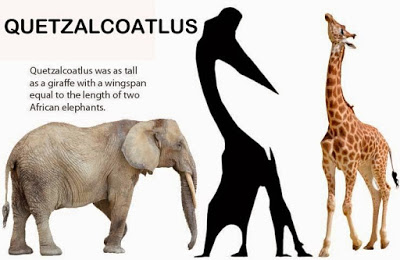
Quetzalcoatlus Size Comparison
Fossil records from all across the world indicate that there existed a tremendous variety of great creatures in large numbers. New species are being discovered all the time, and the vast majority of fossils likely reside in places that man cannot readily access, such as buried beneath the sea floor.
Back in the 1990s I was teaching a Sunday School class of youth. I brought with me a variety of small plastic models of dinosaurs and set them on display in front of the students. I asked them where in Bible history they would place the dinosaurs. Other than speculation that the behemoth and leviathan that God described in the book of Job were some form of dinosaur, there is no Biblical mention of any such creatures existing on this present earth. If such animals had existed concurrently with mankind, they would have posed a very great threat. Yet there is no Scriptural account of man having to contend with these great creatures. The Old Testament describes David slaying a lion and a bear. The lion is frequently mentioned as among the fiercest and most deadly adversaries of man. There is no mention of mankind having to contend with creatures as great as Pterodactyls, Tyrannosaurs, Triceratops, and the various massive Sauropods.
An additional issue that I raised with the students in my class was that both creation scientists and evolutionary scientists agree that there is strong evidence that the earth was once largely covered in ice. It is estimated that much of the earth’s surface was covered in ice a mile thick. Huge glaciers moved across the earth’s surface, scouring out valleys, moving huge stones hundreds of miles, and leaving deep deposits of fertile soil in places like America’s Northern Midwestern states.
A few years ago I had the opportunity to visit Yosemite National Park in California. While there I saw evidence of the massive glaciers that carved out Yosemite Valley from solid rock. I took the following photograph as I stood atop “Glacier Point.” The name of this location points to the evidence one can see below. Across the valley wall, one can observe the telltale signs of huge glaciers that scarred the rock face as they moved through the valley. You can see where the glaciers gouged the rock face in the photograph I took below.
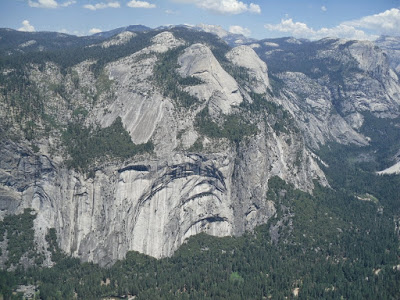
Yosemite Valley from Glacier Point
I posed the question to the students in my Sunday School class, “Where in the history recorded for us in the Bible can we place the ice age(s) that this world has experienced?”
Another geologic oddity is observed in the discovery of ocean fossils in mountainous regions of the earth. How did the fossils of ocean dwelling creatures end up embedded in rock in mountains that are thousands of feet above, or thousands of miles removed, from the nearest ocean?
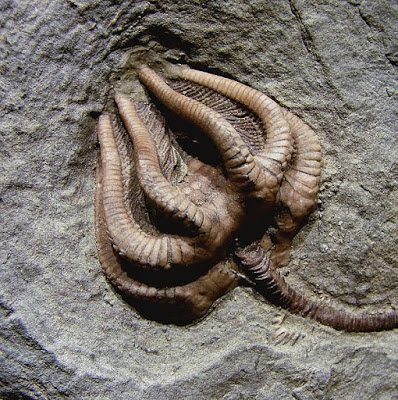
Crinoid Fossil (a marine animal) Discovered in Indiana in the Heart of America
The Bible provides a continuous history of this planet from the creation of the first man. The Bible also provides us with a very accurate understanding of how long it has been since Adam was created. Numerous genealogies are listed, many of them giving the ages of individuals when sons were born to them, that allow for a precise calculation of the length of time mankind has resided upon this planet. From the creation of Adam to Christ a period of approximately 4,000 years elapsed. From Christ to the present day, mankind has experienced another 2,000 years of history. It can be reasonably established from Biblical evidence that man has been present on this globe for the past 6,000 years.
What the Bible does not record are any ice ages that occurred simultaneously with the existence of mankind. Neither does the Bible provide any evidence that dinosaurs roamed the earth since the time of Adam’s creation. Some in attempting to find some explanation for the presence of dinosaurs on an earth that they have been taught is no more than 6,000 years old have looked for some extinction event that could explain why dinosaurs are absent from the historical account of the Bible. The only Biblical extinction event that presents itself to the minds of most readers is the flood of Noah. Consequently, some have theorized that the dinosaurs were not taken aboard the ark, but perished in the great flood that inundated the world at that time.
This explanation does not stand up to scrutiny. The Biblical account of Noah’s flood declares that Noah took some of EVERY kind of animal upon the earth with him on the ark. The only distinction that Yahweh made between animals at the time was that the clean animals were taken aboard in groups of seven, while the unclean animals went onboard in twos.
Genesis 7:2-3, 8-9
You shall take with you of every clean animal by sevens, a male and his female; and of the animals that are not clean two, a male and his female; also of the birds of the sky, by sevens, male and female, to keep offspring alive on the face of all the earth… Of clean animals and animals that are not clean and birds and everything that creeps on the ground, there went into the ark to Noah by twos, male and female, as God had commanded Noah.
If dinosaurs existed at the time of the flood of Noah, and Yahweh had intended to wipe them out, He would certainly have stated something about the matter. Yet, the Bible speaks nothing of any animals in existence at the time being singled out for judgment. When God formed the present creation in six days He declared all of it to be good. If the dinosaurs were part of the six days of creation, we are left without explanation as to why God changed His mind about them.
It was a blessing that the Father led me to an explanation of these difficulties when I was still in my youth. In the late 1970s and early 1980s I was introduced to the writings of Watchman Nee, a Chinese minister who was very active in teaching in the 1930s to 1950s. He was subsequently arrested by the Communists and sent away to prison where he eventually died. This Chinese martyr had a very keen mind that sought out understanding of the things of God. I found his teachings to be of great help to me in my early Christian experience. Watchman Nee’s teachings disclosed to me a number of doctrines that I had never encountered in the Baptist churches of my childhood. In one little book titled The Mystery of Creation, I was introduced to what is commonly known today as “the gap theory.” Following is an excerpt from that writing.
The general concept among Christians regarding the first chapter of Genesis is that the very first verse is a kind of general introduction or premise, and that the works which are done in the six days to follow explain it. In other words, they take the words “In the beginning God created the heavens and the earth” as the subject of Chapter 1. The writer of Genesis, so they speculate, outlines what he intends to say in the first sentence and then proceeds to explain it in detail. Having mentioned when God created the heavens and the earth, he then continues by telling what condition the earth is in and how God day after day creates light, air, earth, plants, animals, and so forth. Such is the popular view as to how Genesis 1 narrates the creation story and how the universe was created out of waste and void. Yet those who study carefully the first chapter of sacred Scripture deem this interpretation to be erroneous…
In the original Hebrew, this initial verse of the first chapter of Genesis contains seven words which carry within themselves a sense of independence. These divinely revealed words do not say that in the beginning God “formed” or “made” the world out of certain raw materials. No, the heavens and the earth were created. This word “created” is “bara” in the original. So that in the beginning God bara the heavens and the earth. This word “bara” is used three more times in Genesis 1 and 2: (1st) “And God created [bara] the great sea-monsters, and every living creature that moveth, wherewith the waters swarmed, after their kind, and every winged bird after its kind” (1.21); (2nd) “And God created [bara] man in his own image, in the image of God created he him; male and female created he them” (1.27); and (3rd) “And God blessed the seventh day, and hallowed it; because that in it he rested from all his work which God had created [bara] and made” (2.3). To “create” is to “call the things that are not, as though they were” (Rom. 4.17). These sea-monsters and living things not only had physical bodies but also had an animated life within them. They therefore required a direct creative act of God. Thus it is only reasonable that the Scriptures should use the word “created” rather than the word “made” in these passages. In similar manner, though man’s body was formed out of the dust of the ground, his soul and spirit could not be made out of any physical material, and hence the Bible declared that “God created man in his own image.”
In the first two chapters of Genesis three different words are used for the act of creation: (1) “bara”- calling into being without the aid of pre-existing material. This we have already touched upon; (2) “asah”- which is quite different from “bara,” since the latter denotes the idea of creating without any material whereas “asah” signifies the making, fashioning, or preparing out of existing material. For instance, a carpenter can make a chair, but he cannot create one. The works of the Six Days in Genesis are mainly of the order of “asah”; (3) “yatsar”- which means to shape or mold as a potter does with clay. This word is used in Genesis 2.7 as follows: “And Jehovah God formed man of the dust of the ground.” Interestingly, Isaiah 43.7 illustrates the meaning and connection of all three of these words: “every one that is called by my name, and whom I have created for my glory, whom I have formed, yea, whom I have made.” “Created” signifies a calling into being out of nothing; “formed” denotes a fashioning into appointed form; and “made” means a preparing out of pre-existing material.
The words “In the beginning” reinforce the thought of God creating the heavens and the earth out of nothing. There is really no need to theorize; since God has so spoken, let men simply believe. How absurd for finite minds to search out the works of God which He performed at the beginning! “By faith we understand that the worlds have been framed by the word of God” (Heb. 11.3). Who can answer God’s challenge to Job concerning creation (see Job 38)?…
To understand the first chapter of Genesis, it is of utmost importance that we distinguish the “earth” mentioned in verse 1 from the “earth” spoken of in verse 2. For the condition of the earth referred to in verse 2 is not what God had created originally. Now we know that “God is not a God of confusion” (1 Cor. 14.33). And hence when it states that in the beginning God created the earth, what He created was therefore perfect. So that the waste and void of the earth spoken of in verse 2 was not the original condition of the earth as God first created it. Would God ever create an earth whose primeval condition would be waste and void? A true understanding of this verse will solve the apparent problem.
“Thus saith Jehovah that created the heavens, the God that formed the earth and made it, that established it and created it not a waste, that formed it to be inhabited: I am Jehovah; and there is none else” (Is. 45.18). How clear God’s word is. The word “waste” here is “tohu” in Hebrew, which signifies “desolation” or “that which is desolate.” It says here that the earth which God created was not a waste. Why then does Genesis 1.2 state that “the earth was waste”? This may be easily resolved. In the beginning God created the heavens and the earth (Gen. 1.1). At that time, the earth which God had created was not a waste; but later on, in passing through a great catastrophe, the earth did become waste and void. So that all which is mentioned from verse 3 onward does not refer to the original creation but to the restoration of the earth. God created the heavens and the earth in the beginning; but He subsequently used the Six Days to remake the earth habitable. Genesis 1.1 was the original world; Genesis 1.3 onward is our present world; while Genesis 1.2 describes the desolate condition which was the earth’s during the transitional period following its original creation and before our present world.
Such an interpretation cannot only be arrived at on the basis of Isaiah 45.18, it can also be supported on the basis of other evidences. The conjunctive word “and” in verse 2 can also be translated as “but”: “In the beginning God created the heavens and the earth, but the earth was waste and void.” G. H. Pember, in his book “Earth’s Earliest Ages,” wrote that
the “and” according to Hebrew usage—as well as that of most other languages—proves that the first verse is not a compendium of what follows, but a statement of the first event in the record. For if it were a mere summary, the second verse would be the actual commencement of the history, and certainly would not begin with a copulative. A good illustration of this may be found in the fifth chapter of Genesis (Gen. 5.1). There the opening words, “This is the book of the generations of Adam,” are a compendium of the chapter, and, consequently, the next sentence begins without a copulative. We have, therefore, in the second verse of Genesis no first detail of a general statement in the preceding sentence, but the record of an altogether distinct and subsequent event, which did not affect the sidereal [starry] heaven, but only the earth and its immediate surroundings. And what that event was we must now endeavour to discover.
Over a hundred years ago, Dr. Chalmers pointed out that the words “the earth was waste” might equally be translated “the earth became waste.” Dr. I. M. Haldeman, G. H. Pember, and others showed that the Hebrew word for “was” here has been translated “became” in Genesis 19.26: “His wife looked back from behind him, and she became a pillar of salt.” If this same Hebrew word can be translated in 19.26 as “became,” why can it not be translated as “became” in 1.2? Furthermore, the word “became” in 2.7 (“and man became a living soul”) is the same word as is found in Genesis 1.2. So that it is not at all arbitrary for anyone to translate “was” as “became” here: “In the beginning God created the heavens and the earth, [but] the earth became waste and void.” The earth which God created originally was not waste, it only later became waste…
We do not know when God created the heavens and the earth, nor do we know how long was the period after the original creation that the desolation described in verse 2 occurred. But we do believe that the original, perfect creation must have passed through many many years before it became waste and void. Such a long period would be enough to cover the so-called pre-historic age. All the years which geology demands and all the so-called geologic periods which it distributes among those years can fall into this time frame. We do not know how long the earth underwent change nor how many changes there were before it became waste and void because the Scriptures do not tell us these things. Yet we can affirm that the Bible never states that the age of the earth is but six thousand years in length. It merely shows that the history of man is approximately six thousand years old. By understanding the first two verses of Scripture, we can recognize that there is no contradiction between the Bible and geology. The attack of geologists against the Bible is merely beating the air. How marvelous is the word of God.
[Source: Watchman Nee; The Mystery of Creation]
This doctrine presented by Watchman Nee was greatly divergent from what I had been taught in the Baptist church. Yet, even at that young age I had developed habits of testing new teachings carefully. I got out my Strong’s Concordance and checked the definitions of the words in dispute. I verified for myself whether the conjunction “and” that ties verses 1 and 2 of Genesis together could be translated as “but.” I also checked to see if the Hebrew word rendered as “was” in verse 2 had been translated as “became” in other verses. I found that every statement made, every argument set forth, in the words above by Watchman Nee were in fact true. The most common teaching of the Genesis account of creation follows the pattern set forth by the King James Bible.
Genesis 1:1-2
In the beginning God created the Heaven and the earth. And the earth was without form, and void; and darkness was upon the face of the deep. And the Spirit of God moved upon the face of the waters.
KJV
The phrasing here leads the reader to conclude that God originally created the Heaven and the earth formless and void and covered in darkness. Beginning in verse three we then read of God forming the earth and all it contains into a habitable planet. Yet, those who translate the book of Genesis from Hebrew to English could have just as readily set forth the words in the following manner.
Genesis 1:1-2
In the beginning God created the Heaven and the earth. But the earth became formless, and void; and darkness was upon the face of the deep. And the Spirit of God moved upon the face of the waters.
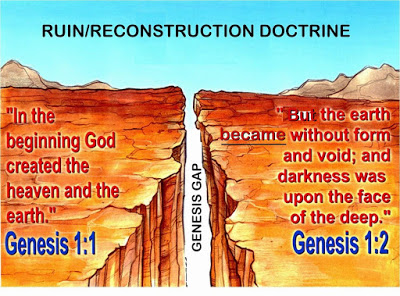
I checked every Bible verse that Watchman Nee cited, following the pattern of the faithful Bereans who looked to the Scriptures to see if what they were being told was true. I looked at the second chapter of Genesis to see if in fact the KJV translators had rendered the Hebrew word hayah as “became.” I found that they had done so.
Genesis 2:7
And the Lord God formed man of the dust of the ground, and breathed into his nostrils the breath of life; and man became [hayah] a living soul.
KJV
I also looked up this Hebrew word’s definition in Strong’s Concordance.
hayah (haw-yaw); a primitive root; to exist, i.e. be or become, come to pass (always emphatic, and not a mere copula or auxiliary):
Why did the KJV translators render this word as “was” in Genesis 1:2 when they knew it could bear the meaning of “become,” or “come to pass”? That is not a difficult question to answer. I explored the subject of translation inconsistencies in depth in the writing titled Yahweh’s Book. Men translate according to their understanding. If they believe the earth was originally created by God in a formless and void state, then their belief will influence their translation decisions. The KJV translators, however, had an even greater obstacle with which to contend. King James had given them a list of fifteen rules to follow in producing their Bible translation. One of the rules stated that they could not render any words into English in a way that would contradict the orthodox teaching of the Church of England. They were therefore constrained by the doctrine of the church, whether that doctrine was true or false.
Doctrinal beliefs within the church tend to ebb and flow. What is considered orthodox to one generation is often abandoned by the next. Most present day Christians are unfamiliar with the ruin/reconstruction doctrine, having never been taught that there is a gap of indeterminate length indicated between the first two verses of Genesis. Upon hearing it, many view the doctrine with suspicion. They assume that this must be some new and heretical doctrine.
There is a division between Biblical creationists today. Some are young earth creationists. They believe that the entire creation is only 6,000 to 10,000 years old. They hold to the present majority view of Genesis verses 1:1-2. They allow for no gap to exist. They refuse to entertain any notion that the earth as we presently know it may have been judged and destroyed in an age before Adam, and that it could be much older than 6,000 years.
There is another group who are at present in the minority who perceive a gap between the earth’s first creation, and its re-creation whose account begins in the 3rd verse of Genesis. Both hold to a literal six day account of the creation, but differ on other matters. Those who hold to the ruin/reconstruction doctrine of the creation are able to allow for the existence of dinosaurs on that more ancient, original earth. When it was judged and destroyed, so too was all life on the planet. They also are able to account for past ice ages, for when God judged the earth and sealed it up in darkness, blocking the light and warmth of the Sun, this could very well be what precipitated a global ice age.
Since the Bible does not tell us how long the original earth existed before it was destroyed, and it does not tell us how long it lay in a state of being formless, void, and covered in darkness, those who hold to the ruin/reconstruction doctrine find no difficulty in allowing for various geological ages to have passed.
If there were no more to the matter than it being possible to translate “and” as “but,” and “was” as “became,” we might all just stop now and take a vote as to which rendering we think is the more plausible. This would be a very poor way to establish truth, and it would likely devolve into a matter of personal opinion, a mere popularity contest. Yahweh, however, has not left us without further evidence to test this matter. Before I present that evidence I want to address some of the criticism of the ruin/reconstruction doctrine.
Young earth creationists frequently refer to the ruin/reconstruction doctrine as “the gap theory.” The employment of the word “theory” instead of the word “doctrine” reveals their bias in the matter. There is a tendency for men to seek to control the language in which ideas are discussed in order to favor their view of a matter. We see this in the struggle over abortion. Those who are defenders of life in the womb prefer to call themselves “pro-life,” but their opponents have labeled them as “anti-abortion.” The prefix “anti” carries a negative stigma. It paints the person as someone who is seeking to restrict another person’s freedom. This is blatant hypocrisy, for their can be no greater curtailment of a person’s freedom than to murder them while they are still in the womb. It is similarly disingenuous for young earth creationists to speak of their “doctrines” while labeling opposing views as “theories.” They are all doctrines.
One of the false charges made by young earth creationists against the ruin/reconstruction doctrine is that it is of fairly recent origin and is merely an attempt to reconcile evolutionary theory with the Bible. I have read the oft repeated charge that Thomas Chalmer’s Bridgewater Treatise that popularized this doctrine in the mid 1800s was the starting point of this doctrine. The claim continues by asserting that the ruin/reconstruction doctrine was devised as a way to find some agreement with geologists who were beginning to present evidence for a much older earth.
These charges by opponents of “the gap theory” are false on multiple levels. Those who teach a Genesis gap are no more likely to be evolutionists than those who do not. I personally believe in a literal six days of creation. Nor do those who perceive a gap to be indicated believe that the geologists are correct in their varied claims of the earth being hundreds of millions, or billions of years old. They simply allow that a gap of unspecified length exists in the Biblical account. Most Bible teachers who are advocates of the ruin/reconstruction doctrine do not pretend to know how long a gap is indicated, and they do not look to science to provide the answer.
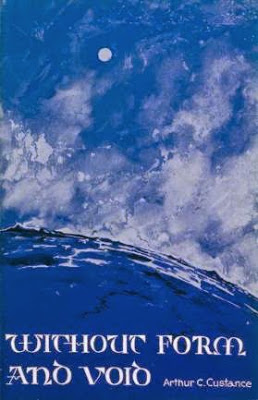
Additionally, the ruin/reconstruction doctrine did not begin with Thomas Chalmers in the 1800s, nor did it arise as a response to scientific claims of a much older earth. It is an ancient doctrine. One of the most scholarly and well documented treatises in defense of the ruin/reconstruction doctrine was authored by Arthur C. Custance. His book is titled Without Form and Void and can be read in its entirety free of charge online. The evidence he presents makes it inexcusable for young earth creationists to parrot the charge that “the gap theory” is a relatively new doctrine. Arthur Custance demonstrates the great antiquity of the doctrine among both Jews and Christians. Arthur Custance did prodigious research into this subject, and is very rational in his presentation.
To me, this issue is important, and after studying the problem for some thirty years and after reading everything I could lay my hands on pro and con and after accumulating in my own library some 300 commentaries on Genesis, the earliest being dated 1670, I am persuaded that there is, on the basis of the evidence, far more reason to translate Gen. 1.2 as “But the earth had become a ruin and a desolation, etc.” than there is for any of the conventional translations in our modern versions.
[Source: Without Form and Void, Arthur Custance]
I won’t repeat the extensive Hebrew grammatical evidence that Custance presents on this subject. Those who are interested can view his book online.
Custance reveals that the ruin/reconstruction doctrine was held among the Jews as far back as the time of the apostles. He also cites references from among the early church fathers who taught this view.
Origen, for example, who lived from 186 to about 254 A.D., and to whom the original languages of the Bible were very familiar, has this to say in his great work, De Principiis, at Gen. 1.1: “It is certain that the present firmament is not spoken of in this verse, nor the present dry land, but rather that heaven and earth from which this present heaven and earth that we now see afterwards borrowed their names.” And that he saw verse 2 as a description of a “casting down” of the original is borne out quite clearly by his subsequent observation that the condition resulted from a “disruption” which is best described, he suggests, by the Latin verb dejicere, ‘to throw down.’
[Source: Ibid]
This doctrine has waxed and waned within the church. Few Christians today realize that as recently as the 1950s the ruin/reconstruction doctrine found wide support in American and European churches. One online encyclopedia provides the following statement.
“In fact, with one prominent exception, virtually all of the leading creationists of the 1920s endorsed either the Day-Age or Gap Interpretation of Genesis. The exception was Seventh-Day Adventist teacher and amateur geologist, George McCready Price, who followed Adventist Prophet, Ellen G. White, in limiting the history of life on earth to about 6,000 years. Price attributed most fossil-bearing rock formations to the geological disruptions of the Biblical flood.”
[Source: Microsoft Encarta Encyclopedia]
Arthur Custance expresses a similar view to that which has led me to write this present book. He makes mention of the importance of a Christian having a correct understanding of foundational teachings.
The importance of establishing its intended meaning does not stem from the fact that if it is interpreted in one particular way it can then be used to resolve certain apparent conflicts between the Mosaic cosmogony and modern geological theory. Its importance stems from the fact that it is a foundation statement; and the foundation statements of any belief system are the more critical as they lie nearer the base of its structure. An error at the end of a long line of reasoning may be very undesirable but it is much less dangerous than an error at the beginning. And in the first three chapters of Genesis we have the basic facts upon which are erected the whole theological superstructure of the Christian faith. Uncertainty here, or misinterpretation, is likely to have repercussions throughout the whole of the rest of the system of belief.
[Source: Without Form and Void, Arthur Custance]
With this in mind, I entreat the reader to patiently consider the Biblical evidence for a much older earth that was at some distant point destroyed until the God began the work of reconstruction that is described from Genesis 1:3 and forward. The first argument I would present is taken from a citation from a book published by J. Harris in 1847 titled The Pre-Adamite Earth.
“Now, that the originating act, described in the first verse, was not meant to be included in the account of the six Adamic days, is evident from the following considerations: first, the creation of the second, third, fourth, fifth and sixth days begins with the formula ‘And God said’. It is only natural, therefore, to conclude that the creation of the first day begins with the third verse where the said formula first occurs, ‘And God said, Let there be light’. But if so, it follows that the act described in the first verse, and the state of the earth spoken of in the second verse, must both have belonged to a period anterior to the first day…”
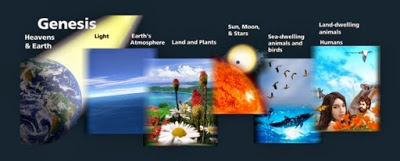
If this explanation is a little unclear to you, I will attempt to clarify the author’s point. Each of the six days of creation has a specific work attached to it. For example, of the second through sixth days we read:
Day Two
Genesis 1:6
Then God said, “Let there be an expanse in the midst of the waters, and let it separate the waters from the waters.”
Day Three
Genesis 1:9
Then God said, “Let the waters below the heavens be gathered into one place, and let the dry land appear.”
Day Four
Genesis 1:14-15
Then God said, “Let there be lights in the expanse of the heavens to separate the day from the night, and let them be for signs, and for seasons, and for days and years; and let them be for lights in the expanse of the heavens to give light on the earth.”
Day Five
Genesis 1:20
Then God said, “Let the waters teem with swarms of living creatures, and let birds fly above the earth in the open expanse of the heavens.”
Day Six
Genesis 1:24
Then God said, “Let the earth bring forth living creatures after their kind: cattle and creeping things and beasts of the earth after their kind”
Seeing that the description of each day has a specific work attached to it, and that each day’s work begins with the words “Then God said,” it is textually consistent to expect that the work of day one also begins with this same expression.
Day One
Genesis 1:3
Then God said, “Let there be light”; and there was light.
This fact reasonably leads to the conclusion that the first two verses of Genesis are speaking of events that preceded the six days of creation. At some time prior to day one of creation, Yahweh had created the heavens and the earth, and they had subsequently become formless and void and covered in darkness.
This leads into a second point in favor of the ruin/reconstruction doctrine. We are told that God did not establish the lights in the heavens until day four. The Bible does not say God created (bara) the heavenly bodies on day four, but the sense is more of God arranging them to “separate the day from the night, and let them be for signs, and for seasons, and for days and years.” Those familiar with Biblical astronomy and the testimony of the constellations and stars in the heaven, will understand how they proclaim the story of man’s fall and redemption. The Bible tells us that the stars are given for this purpose.
Psalms 19:1-4
The heavens are telling of the glory of God; And their expanse is declaring the work of His hands. Day to day pours forth speech, and night to night reveals knowledge. There is no speech, nor are there words; Their voice is not heard. Their utterance has gone out through all the earth, and their words to the end of the world.
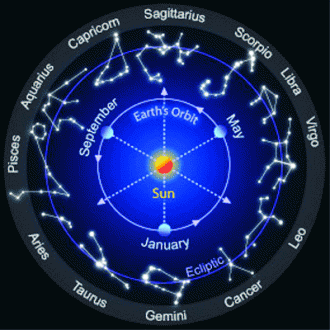
That the ancients recognized the constellations, and perceived messages from God in them was observed long before the magi read the heavenly declaration that the King of the Jews had been born in the time of Christ. The book of Job is among the oldest books of the Bible, and it speaks of a number of constellations. It also speaks of the ancients having a knowledge that God had once sealed the earth in darkness, commanding the sun and stars to no longer give light to the planet.
Job 9:5-9
It is God who removes the mountains, they know not how, when He overturns them in His anger; Who shakes the earth out of its place, and its pillars tremble; Who commands the sun not to shine, and sets a seal upon the stars; Who alone stretches out the heavens, and tramples down the waves of the sea; Who makes the Bear, Orion, and the Pleiades, and the chambers of the south…
This Scripture describes perfectly the doctrine of the ruin and reconstruction of the earth. The mountains were removed in God’s anger. The earth was overthrown and the sun and stars commanded not to shine. When did this occur, since Job is one of the most ancient books of the Bible? There is no account of such an event from the time of Adam’s creation. It must have occurred before Adam. The sun and stars were still in the heavens, but God placed a seal upon them that they might not give forth light.
Is it not puzzling that God would say “Let there be light” on Day One if the sun and stars did not exist until Day Four? This is a problem for those who deny that the heavens and earth already existed, having suffered the effects of a divine judgment. The natural act of God on the first day of the reconstruction of the heavens and earth is to remove the curse of darkness. He therefore removes the seal that He has placed upon the sun and stars as He declares “Let there be light!”
Since God is beginning a new work, and it involves new creatures, and a divine plan for their perfecting as sons of God, it is fitting that on Day Four He should rearrange the heavenly bodies to perfectly declare the glorious plan and the work He will accomplish. His arrangement was so perfectly ordered that thousands of years later, at the right moment, heavenly signs would be observed to mark key events in His work among the new creation. The star declaring the Savior’s birth appeared at the precise time for the wise men of the East to perceive its message. Some thirty years later the sky was darkened at the very hour that the Son of God was offering up His life on the cross. Christ also prophesied that the heavens would announce His return at the end of the age.
Luke 21:25, 27
“And there will be signs in sun and moon and stars… And then they will see the Son of Man coming in a cloud with power and great glory.”
Even as God had to reorder an earth that had been made waste and void and covered by water, He had to reorder the heavens that they might serve as signs, and for seasons, and to give light upon the earth at the proper time. This ordering of the heavens was on Day Four, but its initial work had to begin with God removing the seal He had placed upon the heavens that they might once more give forth their light upon the earth. This was accomplished on Day One.
One of the most profound Biblical evidences of the ruin of the initial earth is observed in the description that is given to the earth in verse two of Genesis.
Genesis 1:2
But the earth became formless and void, and darkness was over the surface of the deep…
We have three descriptors here of the earth’s condition. It was formless (tohu). It was void, or empty (bohu). It was sealed in darkness. If we could find these same three descriptors in another passage of Scripture, and this passage spoke of Yahweh judging and destroying the earth, then we could reasonably conclude that these words are also used in Genesis chapter 1 to describe an earth that had been judged. Does such a passage exist? Yes, it does.
Jeremiah 4:22-28
“For My people are foolish, they have not known Me. They are silly children, and they have no understanding. They are wise to do evil, but to do good they have no knowledge.” I beheld the earth, and indeed it was without form (tohu), and void (bohu); And the heavens, they had no light. I beheld the mountains, and indeed they trembled, and all the hills moved back and forth. I beheld, and indeed there was no man, and all the birds of the heavens had fled. I beheld, and indeed the fruitful land was a wilderness, and all its cities were broken down at the presence of Yahweh, by His fierce anger. For thus says Yahweh: “The whole land shall be desolate; Yet I will not make a full end. For this shall the earth mourn, and the heavens above be black, because I have spoken. I have purposed and will not relent, nor will I turn back from it.”
In this passage the prophet Jeremiah is pronouncing Yahweh’s judgment upon Judah and Jerusalem. Because of the wickedness of the people, He has determined to make the land a desolation. The very same descriptors found in Genesis 1:2 are found in this passage speaking of the ruin God will bring upon the land of His people. Can there be any clearer evidence that the earth described in Genesis 1:2 has suffered the judgment of Yahweh? Not just one, or two, but all three of these signs of judgment are found in both passages of Scripture.
What could account for the destruction of the first earth? What was the transgression that caused Yahweh to turn a habitable planet into a wasteland and to seal it up in darkness? That topic will be explored in the next chapter.
Heart4God Website: http://www.heart4god.ws
Parables Blog: www.parablesblog.blogspot.com
Mailing Address:
Joseph Herrin
P.O. Box 804
Montezuma, GA 31063


0 Comments